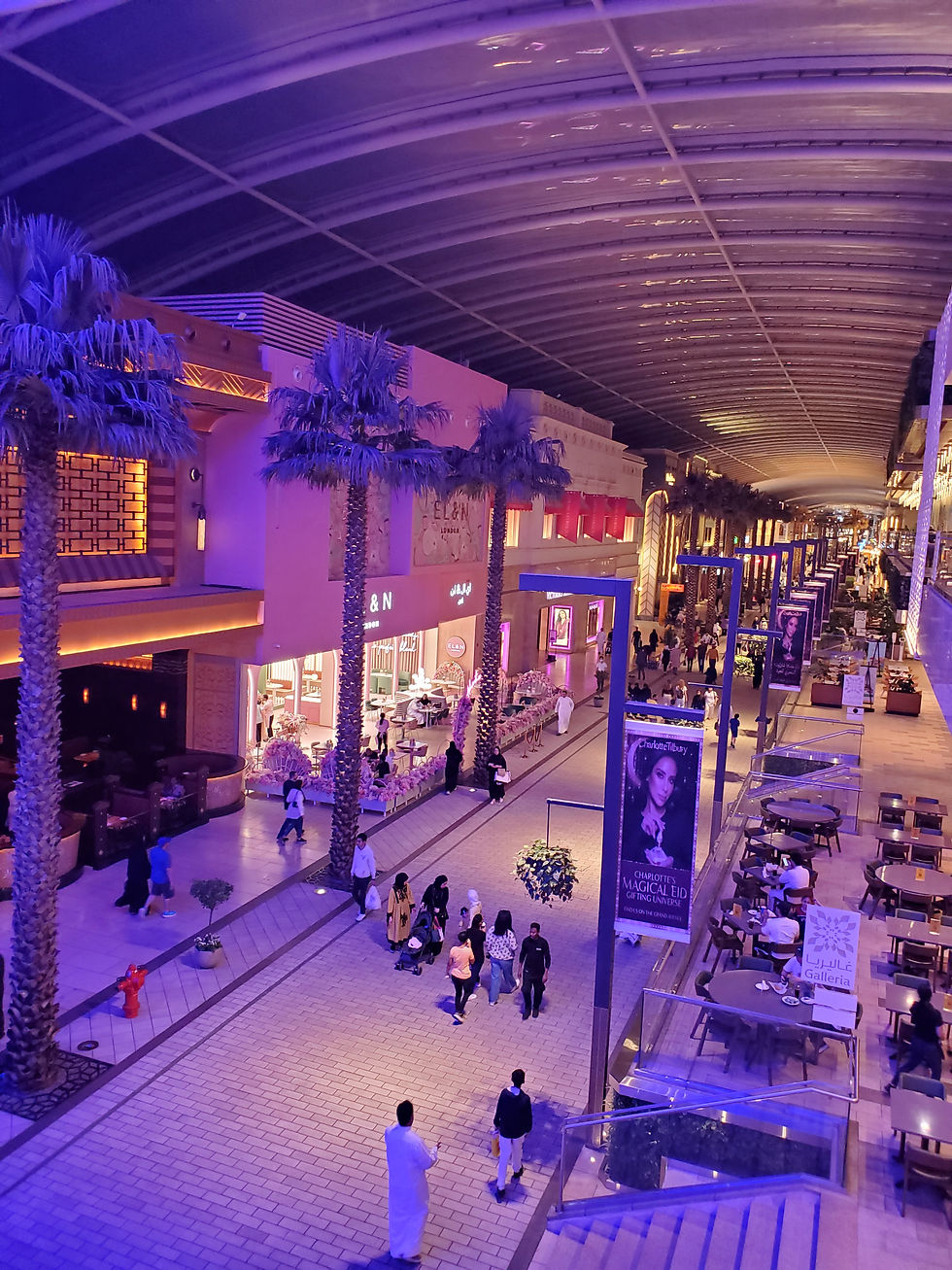RAMADAN IN KUWAIT: A JOURNEY TO TRADITION
- ieattravelwrite
- Jan 29, 2024
- 4 min read
Updated: Mar 15, 2024
Ramadan is a time of year that I like to spend time with family and the community. However, it was not until the month of Ramadan of 2023 that I felt like I want to know what Ramadan is like in other parts of the world.

I was looking to have a more purposeful and meaningful month, breaking from my usual routine and getting a taste of what Ramadan is like elsewhere.
I always heard a lot of things, but it was only when I started doing my research that I found information online to be very limited, especially to destinations that you don't hear people visiting often.


As I was already in Saudi Arabia, I thought, why not fly over to Kuwait, since it's not too far. I booked a one-way ticket, as I had no idea what to expect and/or how many days I would want to spend, given that it is quite expensive, and at the time, very hot out.
I heard about the "Iftar Canon" in some places in the Middle East, but when I found that you can see it in person at Naif Palace in Kuwait, I decided to go check it out to see what the experience would be like.
I unfortunately did not manage to catch the footage I wanted, mostly because the canon was shot unexpectedly and I jumped for a quick second. Nevertheless, the experience was one that I could not forget. From the press surrounding the palace to kids dressed in traditional wear, to families sitting on the grass and sharing a meal, all of the small moments created an experience so beautiful.
My time in Kuwait was short, mostly as it is a very expensive country and most of the attractions seemed to be museums and towers, neither of which peaks my interest.

On my first night, I headed to the Grand Mosque to break my fast and for the night prayers (taraweeh). It was only a few minutes drive from my hotel, and I got there with just enough time to spare to quickly take a tour of the place, before finding the women's entrance.
It is also known as "Al Masjid Al-Kabir." I was impressive by the grandiose and beauty of the architecture. From the hanging chandeliers to the traditional Islamic architecture, to the intricate design in every corner, the mosque is simply stunning.
The main men's prayer hall was the most beautiful. If you would like to visit and hear more about its' structure and history, free guided tours are held every weekday mornings at around 9 am. These hours may differ in the month of Ramadan.

I spent some time exploring the courtyard and neighboring areas. A volunteer saw me and brought a box of food for me to break my fast. Inside the rectangular box, I found some dates, water, some dessert and container with a generous portion of chicken, mandi rice and tomato sauce.
After completing my prayers, I walked over to Souq Sharq, a beautiful shopping mall on the waterfront promenade, offering great views of the buildings.
I spent my morning at the largest urban park, Al Shaheed Park. The park is massive, and has botanical gardens, a prayer room, museums, lakes and more. It was quite hot, but I enjoyed it. The park is beautiful, and has many resting areas along the way. I easily spent 2-3 hours here, taking breaks as I please, people watching and enjoying the view of the city.

I made my way to The Avenues Mall to cool down from the heat. During the month of Ramadan, the stores have different operating hours. For example, the mall was only open between 10 am and 4 pm. They closed for a few hours, before reopening again at 7:30 pm until 1:30 am. The mall gets crowded once they reopen, as many come to eat at the restaurants and shop. The Avenues is a beautiful mall, with an impressive architectural design. It is massive and hard to finish in just a few hours, but it's worth a visit. I preferred it over other malls, such as the Dubai Mall.
Before sunset, I made it early enough to secure a seat in the front row at Naif Palace. I found myself sitting with locals, waiting for the time to break our fast. Iftar was being served in takeout containers. Many families sat on the grass with their kids and waited. It was a pretty cool sight to see the canon, and TV channels broadcasting it live.

The canon is fired daily in Ramadan and signals the end of fasting for the day. I read that it's a tradition that has been passed down from generation to generation. I happened to be the only "outsider" there, but I still felt welcomed. I waited, and watched as many children went to take pictures with the soldiers and the canon.
Once it was time, though I remember hearing a countdown, I still jumped upon hearing the 1-second sound of the firing of the canon. It happened so quickly, that if you blinked, you could miss it. I did not even get the chance to get a great picture to capture the moment, but I found the experience to be pretty cool and different from what I'm used to. You can hear the sounds of the athan (the call to prayer) in the background from nearby mosques.
This marked the end of my short stay in Kuwait.
Have you been to Kuwait?













Comments